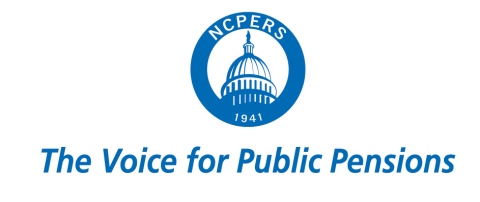WASHINGTON--(BUSINESS WIRE)--Public retirement systems produced solid returns, kept a lid on expenses, and adopted more conservative investment assumptions during 2017, according to a wide-ranging annual study by the National Conference on Public Employee Retirement Systems.
The 2017 NCPERS Public Retirement Systems Study reflects how pension trustees, managers, and administrators are constantly pursuing fiscal and operational improvements, said Hank H. Kim, executive director and chief counsel of NCPERS.
“The nation’s pension systems are deeply committed to their mission of providing a secure retirement for millions of firefighters, police officers, teachers, and other public sector workers,” Kim said. “Over the seven years we have conducted this annual study, pension systems have grown increasingly confident in their ability to adapt to pressure and deliver on their promise to retired public servants.”
The 2017 NCPERS Public Retirement Systems Study draws on responses from 164 state and local government pension funds with more than 15.5 million active and retired memberships and market assets totaling $1.8 trillion. The majority—62 percent—were local pension funds, while 38 percent were state pension funds. NCPERS conducted the seventh annual study in September through December 2017 in partnership with Cobalt Community Research.
Among the key findings:
- Public pension systems administered and managed funds at a lower cost than most mutual funds. The study found pension expense ratios averaged 55 basis points per dollar of investment. The 2017 Investment Company Fact Book pegs expense ratios at 63 basis points for equity mutual funds and 74 basis points for hybrid mutual funds. “Despite rhetoric extolling the advantages of defined contribution plans such as 401(k)s, the fact remains that pension funds consistently provide a higher level of benefits to members than most mutual funds do,” Kim said.
- Aggregated one-year investment returns jumped to 7.8 percent, from 1.5 percent in 2016. Longer-range returns hovered at or near the assumed rate of return.
- The percentage of funds receiving their full, statutory contributions from governments rose to 74 percent, from 70 percent in 2016. In a related development, employer contributions rose to 22 percent, from 18 percent. “It is very encouraging to see more governments honoring their commitments to pension systems, and this is why we see employer contributions inching higher,” Kim said.
- The vast majority of participants in the 2017 study said they have either reduced their return-on-investment assumptions (64 percent) or plan to do so (21 percent.) The average investment assumption stood unchanged at 7.5 percent and the average inflation assumption ticked down to 2.9 percent, from 3 percent.
- The smoothing period for calculating investment returns continues to be shortened – down from 5.7 years to 5.0 years. “Asset-smoothing is the practice public pension systems commonly use to stabilize plan contributions by gradually recognizing investment gains and losses,” Kim said.
- Expense ratios across all pension funds were little changed from 54 basis points in 2016. Among a subgroup of 86 pension systems that participated in both the 2016 and 2017 studies, expenses dropped to 52 basis points.
- Average funding levels—the value of the assets in the pension plan divided by an actuarial measure of the pension obligation—declined slightly for the first time in four years as pension funds tweaked investment and inflation assumptions.
About NCPERS
The National Conference on Public Employee Retirement Systems (NCPERS) is the largest trade association for public sector pension funds, representing more than 500 funds throughout the United States and Canada. It is a unique non-profit network of public trustees, administrators, public officials and investment professionals who collectively manage more than $3.5 trillion in pension assets. Founded in 1941, NCPERS is the principal trade association working to promote and protect pensions by focusing on advocacy, research and education for the benefit of public sector pension stakeholders.




